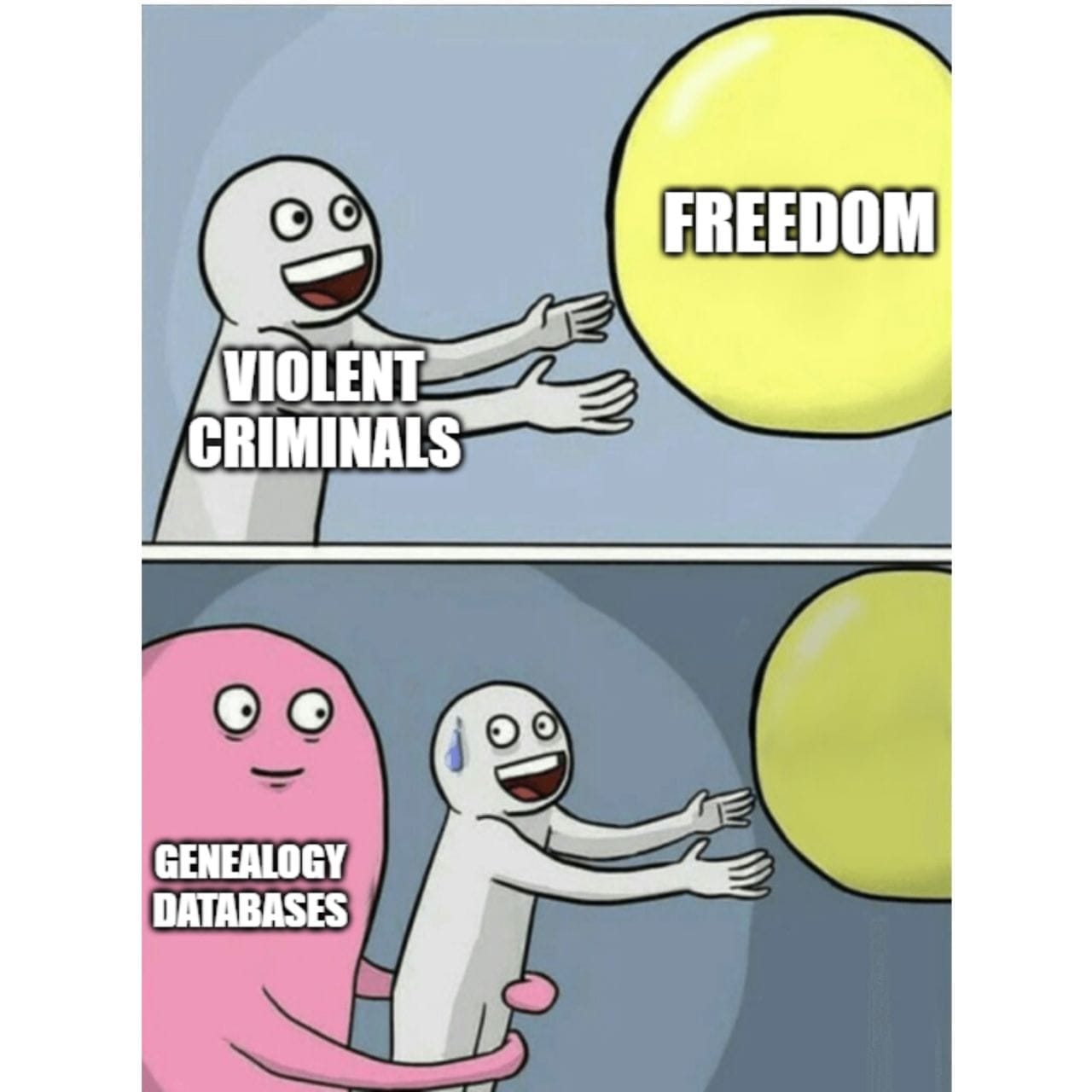Genealogy databases aren't just for finding your relatives anymore
The killer app for consumer genetics literally is to catch killers. Here's why:

You may have seen news reports about the brutal stabbing of 4 University of Idaho students while they slept a few years ago.
Not much was released about the case other than a description of the suspect's vehicle, and that it appeared that a few of the victims woke up during the attack and fought back before being killed.
These murders left the University of Idaho community on edge since a motive was hard for local authorities to ascertain - by all accounts, this was a random act of violence.
Fortunately, a suspect was arrested a month later, with a footnote that apprehension was aided by genealogy databases.
Now, you might ask why this is an important detail, but way back in 2018, it was shown that genetic databases, like GEDmatch, could be used to identify most white Europeans, meaning, if your DNA was left at a crime scene, that DNA could be matched with your name.
GEDmatch, at the time, had 1.2m users who had publicly shared their genotypes.
Today, Ancestry and 23andMe together hold genotypes for more than 30 million people.
That's bad news for criminals.
If you've committed a rape or a murder in the US, and there is DNA evidence, you're probably going to be caught.
This works because the technology that Ancestry and 23andMe use basically serves as a highly accurate fingerprint.
And if you remember from biology class, you share 50% of your DNA with your mother and father and slightly smaller percentages with your cousins and other extended family members.
But, contrary to popular belief, these companies do not perform genome sequencing.
They sample common mutations that are scattered across the human genome using genotyping arrays.
While your genome is composed of 3 billion base pairs, genotyping arrays look at about 700,000 locations.
And because you share many of these genetic differences with your relatives, they can be used to link you to your extended family and ancestors through genealogy databases.
That's the consumer use.
On the flip side, law enforcement can use these same databases to identify criminals, essentially by doing the same thing, submitting a sample to a database, and finding all of the relatives that are linked to that sample.
Add in a little bit of sleuthing, and it's pretty easy to narrow down a very short list of potential owners of the original sample.
From there it's just a matter of verifying the match.
The Golden State killer was famously caught after authorities grabbed his garbage from the curb for verification.
Other cases have been solved by compelling suspects to submit a blood or a hair sample for confirmation testing.
In the Idaho case, it was revealed that the killer was caught using 'touch' DNA found at the crime scene.
I'm thankful we have these tools available to put violent criminals behind bars.
It's only a matter of time before we catch them all.

